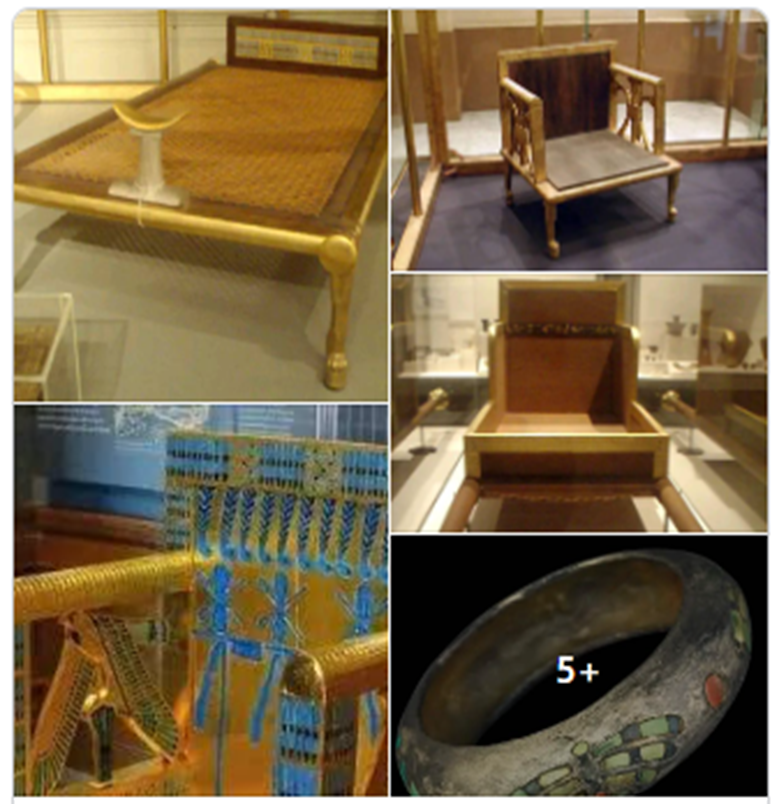Treasures of Queen Hetepe, the guard of the mother of King Khufu

Hetepheres (she lived about 2650 BC) is the name of an ancient Egyptian queen. She was the daughter of a king, the wife of a king, and the mother of a king. Her father, Huni, was the last king of the Third Dynasty, her husband, Sneferu, was the founder of the Fourth Dynasty, and her son, Khufu, built the Great Pyramid of Giza. Her tomb treasures were found next to the Great Pyramid, and the tomb was found completely intact, while her coffin was found empty and was transferred to the Cairo Museum.
She is known to be the mother of Khufu, the builder of the Great Pyramid. Thus, she is considered the wife of Sneferu. This is indicated by the curtains found in her tomb belonging to her tent, which was shaped like a cube. And a box containing tent fabrics. Among the furniture bearing the name of Sneferu. On this basis, it is believed that she was Sneferu's wife. She had the title “Sat-Nether,” meaning daughter of God, and during the Old Kingdom this title was only borne by the mother of the king.
The tomb room was small but full of things.

The food that was kept for her was found to be spoilt, and all the items were covered in dust. I found sheets of gold that decorated the furniture scattered on the floor. But the American archaeologist Reisner was able to reassemble the furniture. Although reassembling things is a common task, there were two chairs in the room, a cube-shaped tent, a bed, and a portable chair. Next to them, I found boxes, jewelry, and a large number of pottery. The bed has been recreated and is on display in the Egyptian Museum in Cairo, and visitors love to photograph it because it gives an image of how the ancient Egyptians slept.
Near the wall of the tomb room was found the coffin of Queen Hetepheres, but it was found empty. The location of the mummy is not yet known. Scientists differ on the explanation of this to the archaeologist, but it took him a long time and patience that time.
Source: websites

